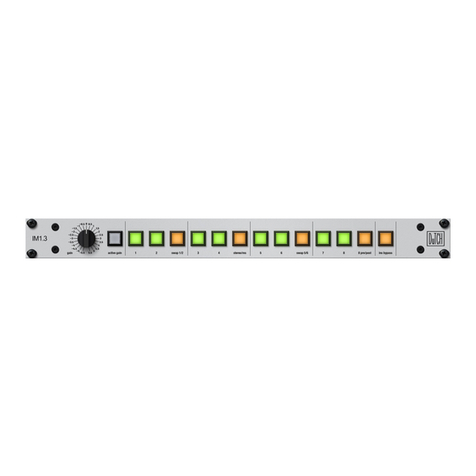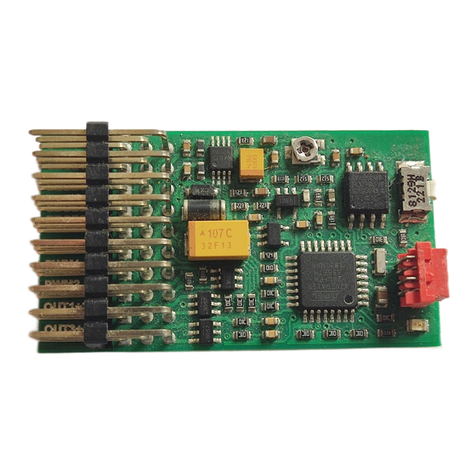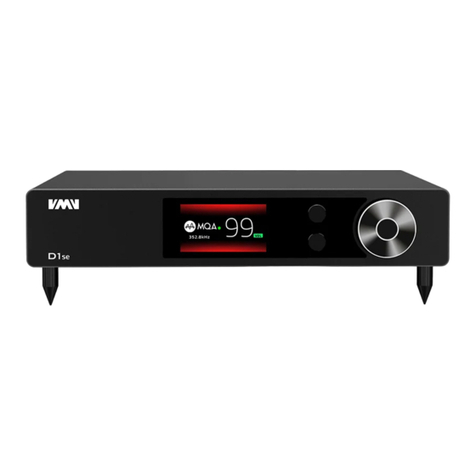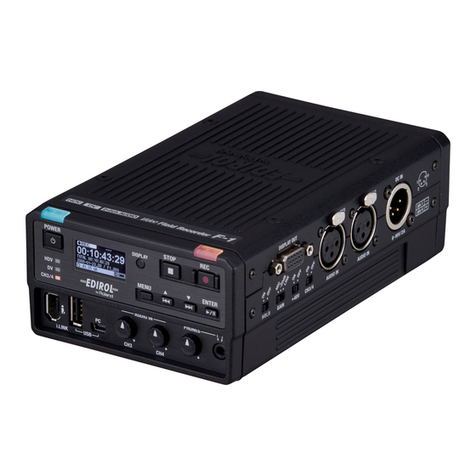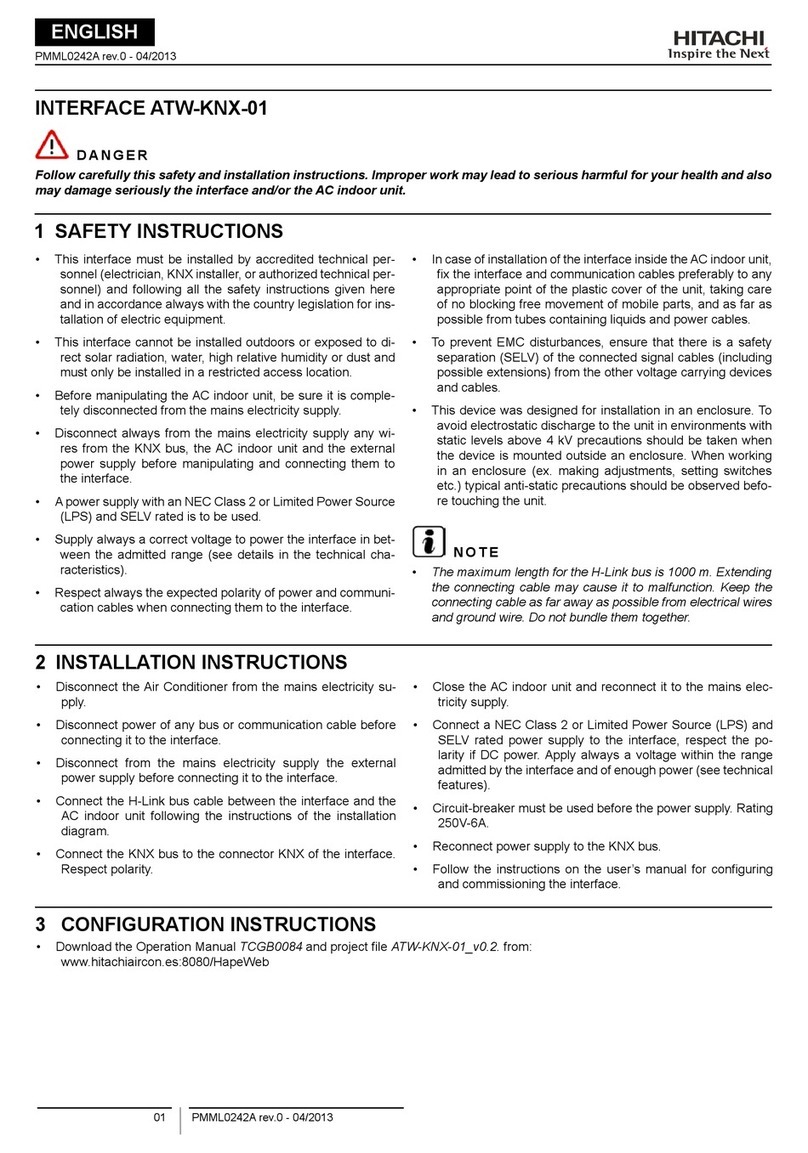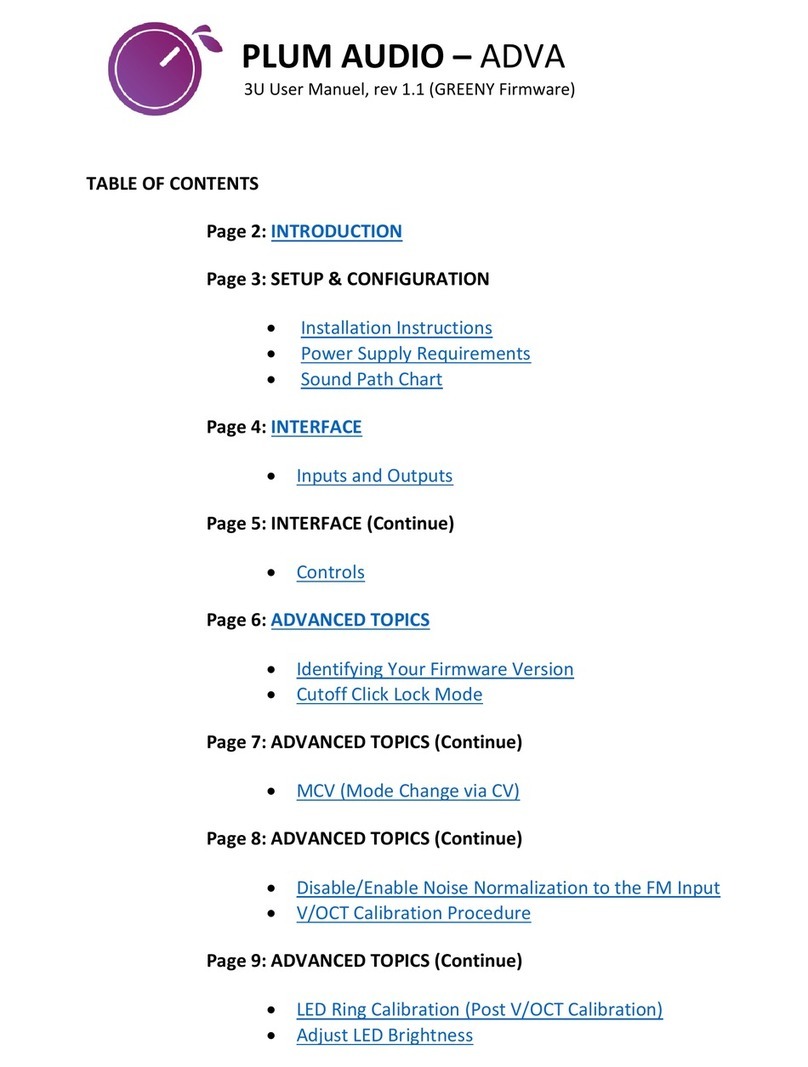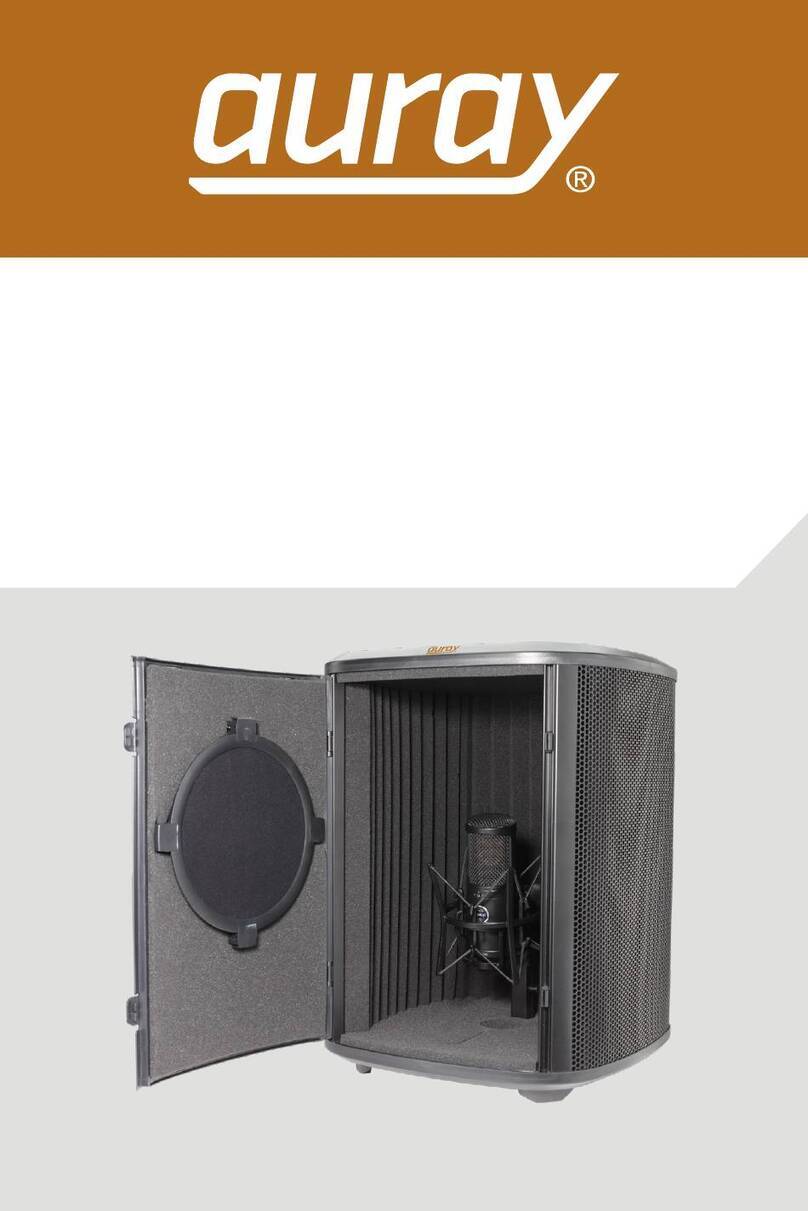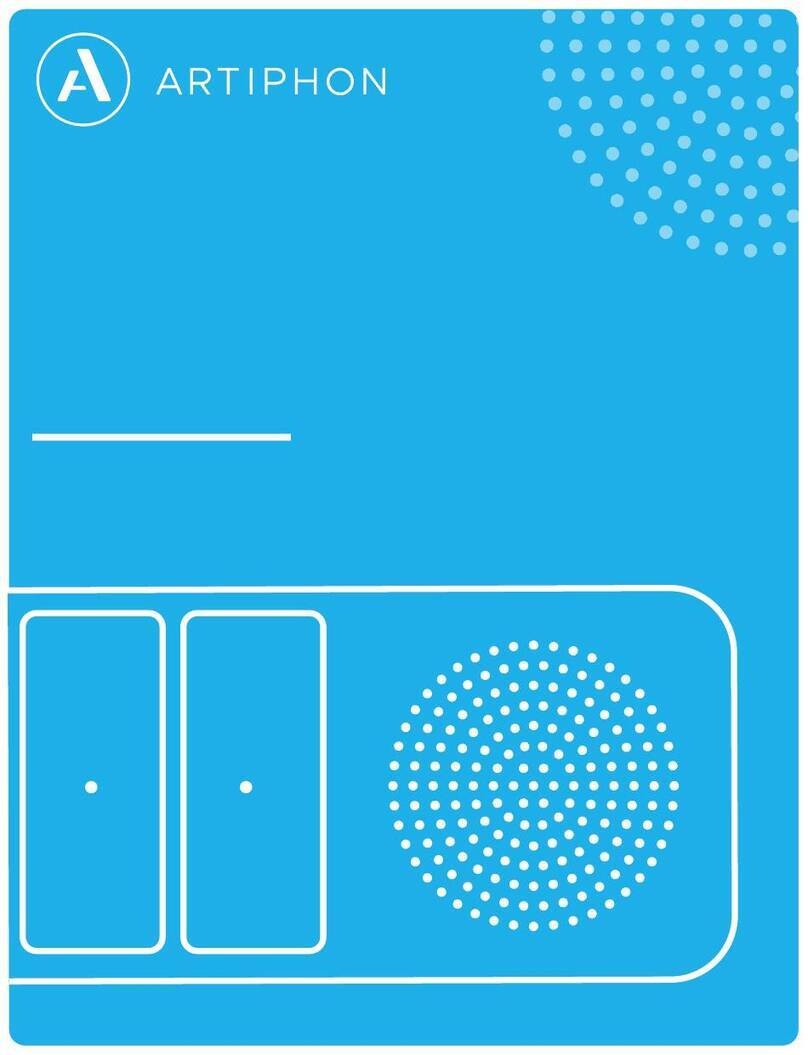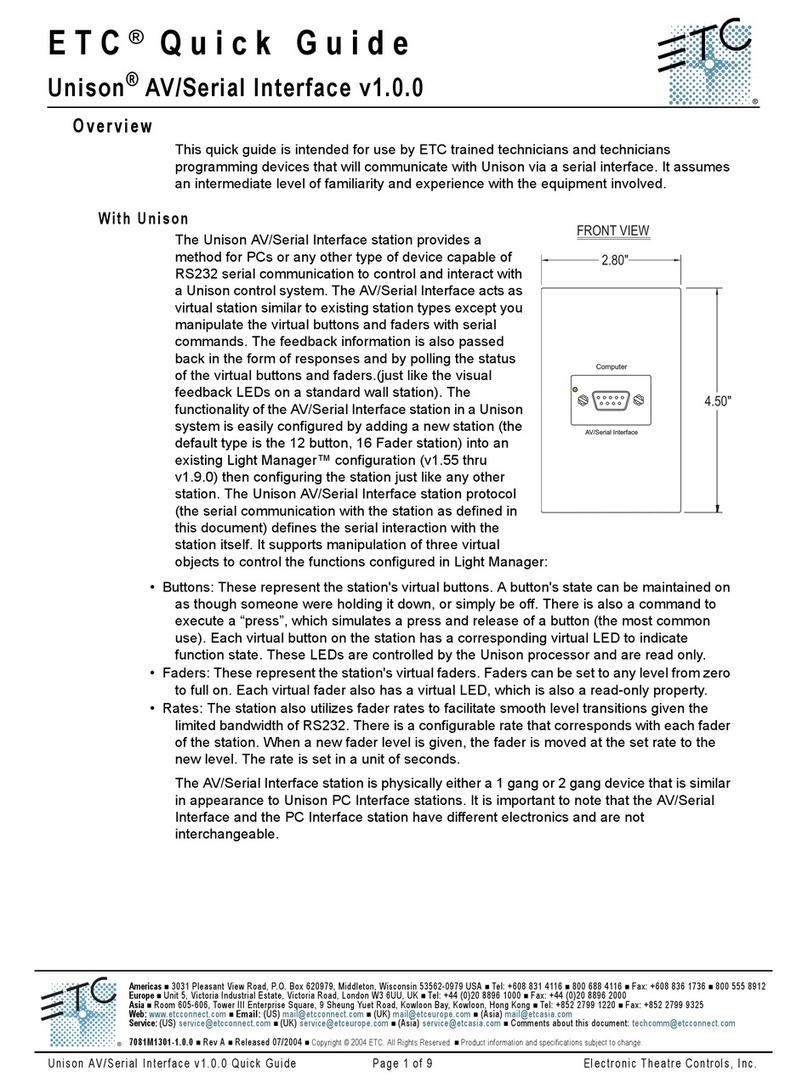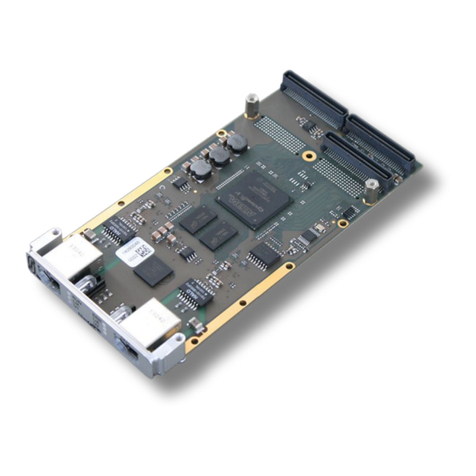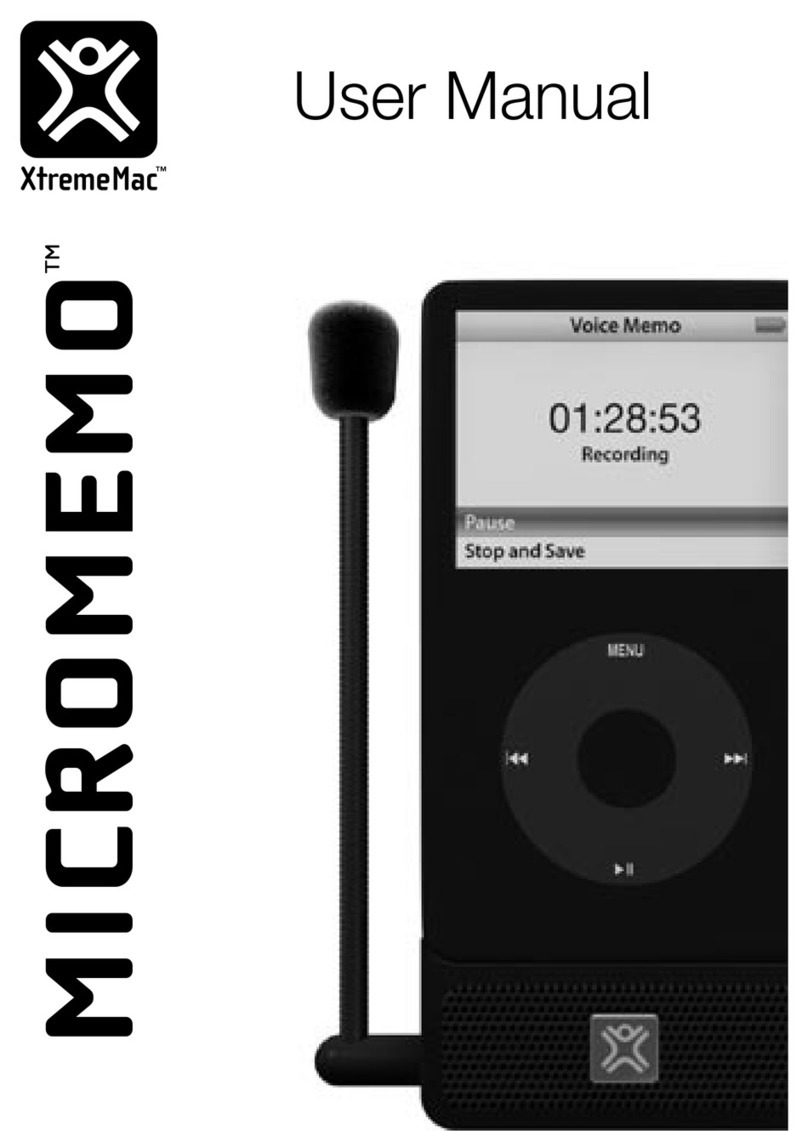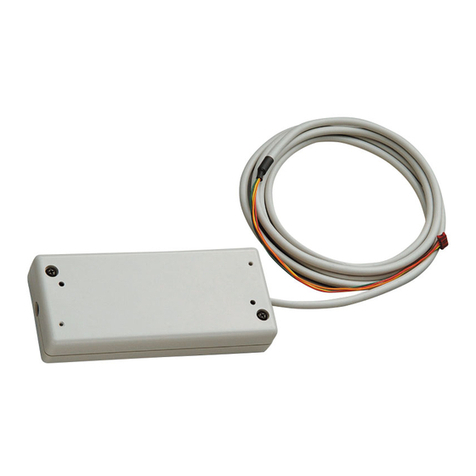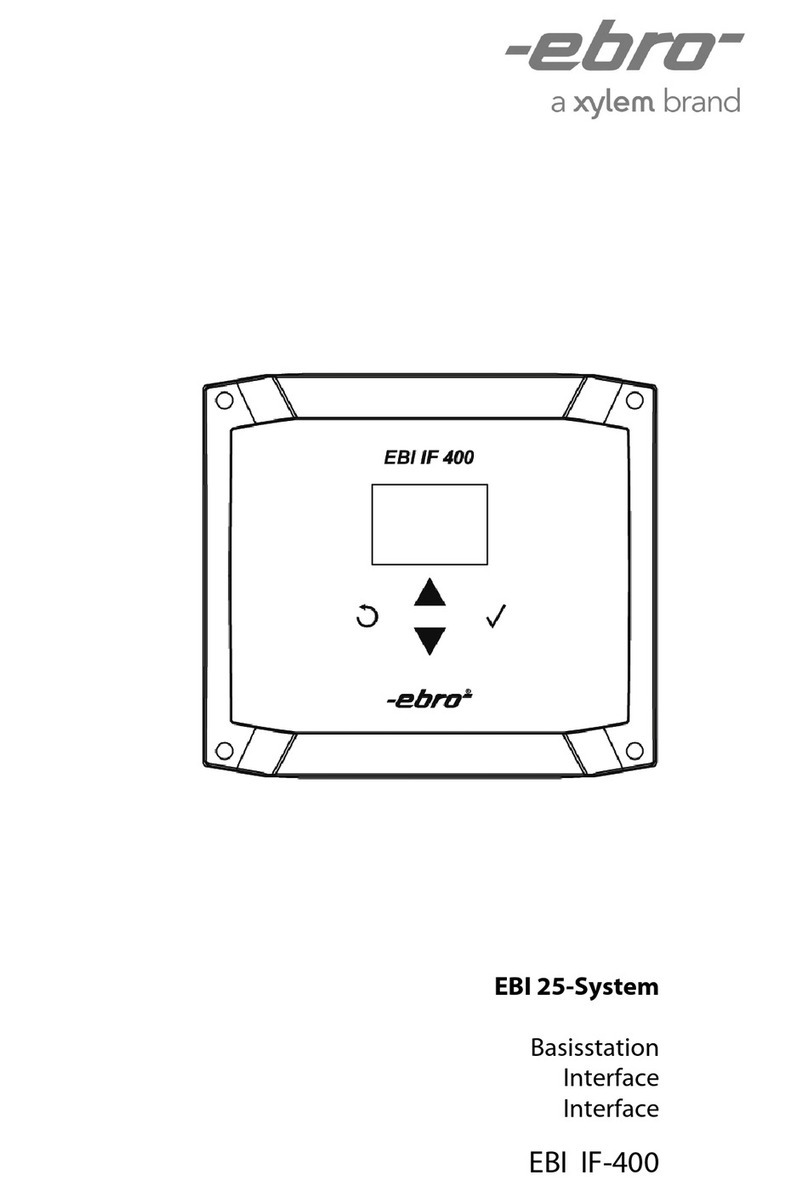Tekelec EAGLE 5 User manual

Tekelec EAGLE®5
Provisioning Database Interface Manual
910-6022-001 Revision A
March 2011
Copyright 2011 Tekelec. All Rights Reserved. Printed in USA.
Legal Information can be accessed from the Main Menu of the optical disc or on the
Tekelec Customer Support web site in the Legal Information folder of the Product Support tab.

Table of Contents
Chapter 1: Introduction.......................................................................8
Overview....................................................................................................................................9
Scope and Audience.................................................................................................................9
Manual Organization................................................................................................................9
Documentation Admonishments............................................................................................9
Customer Care Center............................................................................................................10
Emergency Response..............................................................................................................12
Related Publications...............................................................................................................13
Documentation Availability, Packaging, and Updates.....................................................13
Locate Product Documentation on the Customer Support Site.......................................13
Chapter 2: Functional Description..................................................15
General Description................................................................................................................16
System Architecture................................................................................................................21
Provisioning Database Interface Description......................................................................24
Socket Based Connection...........................................................................................25
String-Based Messages...............................................................................................25
Security.........................................................................................................................25
Transaction-Oriented API..........................................................................................27
Batch-Oriented/Bulk Load........................................................................................28
Command Atomicity..................................................................................................28
Provisioning Ranges of Subscriber Numbers.........................................................28
Transparency of Redundant Systems.......................................................................30
Logs ..............................................................................................................................30
Crash Recovery ...........................................................................................................30
Request IDs .................................................................................................................31
Multiple Session Connectivity .................................................................................31
Request Queue Management ...................................................................................31
Interface Configuration and Installation ................................................................32
File Formats..............................................................................................................................32
Debug Log....................................................................................................................32
Import/Export Files....................................................................................................32
Chapter 3: PDBI Request/Response Messages.............................47
ii
910-6022-001 Revision A, March 2011

Overview..................................................................................................................................48
Messages...................................................................................................................................53
Connect.........................................................................................................................53
Disconnect....................................................................................................................56
Begin Transaction........................................................................................................57
End Transaction...........................................................................................................59
Abort Transaction.......................................................................................................60
Create Subscription.....................................................................................................61
Update Subscription...................................................................................................74
Delete Subscription.....................................................................................................86
Retrieve Subscription Data........................................................................................89
Create Network Entity...............................................................................................97
Update Network Entity............................................................................................102
Delete Network Entity..............................................................................................106
Retrieve Network Entity..........................................................................................107
Switchover..................................................................................................................111
PDBA Status Query...................................................................................................114
Dump Connections...................................................................................................115
Create IMEI Data.......................................................................................................116
Update IMEI Data.....................................................................................................121
Delete IMEI Data.......................................................................................................125
Retrieve IMEI Data....................................................................................................129
Request Service Module Card Report....................................................................132
Chapter 4: PDBI Sample Sessions.................................................140
Introduction...........................................................................................................................141
Network Entity Creation......................................................................................................141
Simple Subscription Data Creation....................................................................................142
Update Subscription Data....................................................................................................143
Simple Queries.......................................................................................................................148
Multiple Response Query....................................................................................................150
Abort Transaction.................................................................................................................151
Update Request In Read Transaction.................................................................................152
Write Transaction In Standby Connection........................................................................152
Simple Subscription Data Creation with Single Txnmode.............................................153
Single IMEI Data...................................................................................................................154
IMEI Block Data.....................................................................................................................155
Asynchronous Service Module Card Report....................................................................156
Synchronous Service Module Card Report.......................................................................157
Service Module Card List.....................................................................................................158
iii
910-6022-001 Revision A, March 2011

Appendix A: PDBI Message Error Codes....................................160
PDBI Message Error Codes..................................................................................................161
Appendix B: TIF Number Substitution Relationships.............166
TIF Number Substitution Relationships............................................................................167
Appendix C: DN Block Self Healing............................................169
DN Block Self Healing .........................................................................................................170
Glossary..................................................................................................................172
iv
910-6022-001 Revision A, March 2011

List of Figures
Figure 1: Example EPAP/PDBA Network......................................................................................17
Figure 2: PDBI System Architecture.................................................................................................22
Figure 3: MPS/EPAP System Configuration..................................................................................24
Figure 4: SSH Tunnel Between the CPA and PDBA Machines....................................................26
v
910-6022-001 Revision A, March 2011

List of Tables
Table 1: Admonishments...................................................................................................................10
Table 2: Parse Failure Reasons .........................................................................................................50
Table 3: Connect Response Return Codes ......................................................................................55
Table 4: Disconnect Response Return Codes .................................................................................56
Table 5: Begin Transaction Response Return Codes .....................................................................58
Table 6: End Transaction Response Return Codes.........................................................................60
Table 7: Abort Transaction Response Return Code.......................................................................61
Table 8: Create Subscription Response Return Codes...................................................................72
Table 9: Update Subscription Response Return Codes.................................................................84
Table 10: Delete Subscription Response Return Codes.................................................................88
Table 11: Retrieve Subscription Data Response Return Codes....................................................97
Table 12: Create Network Entity Response Return Codes .........................................................101
Table 13: Update Network Entity Response Return Codes........................................................105
Table 14: Delete Network Entity Response Return Codes..........................................................107
Table 15: Retrieve Network Entity Response Return Codes .....................................................110
Table 16: Switchover Response Return Codes .............................................................................113
Table 17: PDBA Status Query Response Return Code................................................................115
Table 18: Dump Connections Response Return Code.................................................................116
Table 19: Create IMEI Response Return Codes ...........................................................................120
Table 20: Update IMEI Response Return Codes ..........................................................................124
Table 21: Update IMEI Response Return Codes...........................................................................128
Table 22: Retrieve IMEI Response Return Codes.........................................................................131
Table 23: Retrieve Service Module Card Report Response Return Codes................................134
Table 24: Retrieve Service Module Card Report Response Return Codes................................137
Table 25: Retrieve Service Module Card List Response Return Codes.....................................139
Table 26: Network Entity Creation Example ...............................................................................141
Table 27: Simple Subscription Data Creation Example ..............................................................142
Table 28: Update Subscription Data Example .............................................................................143
Table 29: Update Subscription Data Example 2...........................................................................145
Table 30: Update Subscription Data Example 3...........................................................................146
Table 31: Simple Queries Example ................................................................................................148
Table 32: Multiple Response Query Example...............................................................................150
Table 33: Abort Transaction Example............................................................................................151
Table 34: Update Request in Read Transaction Example............................................................152
Table 35: Write Transaction in Standby Connection Example...................................................153
Table 36: Simple Subscription Data Creation with Single Txnmode Example........................153
Table 37: Single IMEI Data Example .............................................................................................154
vi
910-6022-001 Revision A, March 2011

Table 38: IMEI Block Data Example ..............................................................................................155
Table 39: Asynchronous Service Module Card Report Example ..............................................156
Table 40: Synchronous Service Module Card Report Example .................................................157
Table 41: Service Module Card List Example ..............................................................................158
Table 42: PDBI Message Error Codes ............................................................................................161
Table 43: Supported and Prohibited Subscriber Associations....................................................167
Table 44: Support for DN Block Self Healing................................................................................171
vii
910-6022-001 Revision A, March 2011

Chapter
1
Introduction
This chapter contains general information about the
PDBI documentation, the organization of this
manual, and how to get technical assistance.
Topics:
•Overview.....9
•Scope and Audience.....9
•Manual Organization.....9
•Documentation Admonishments.....9
•Customer Care Center.....10
•Emergency Response.....12
•Related Publications.....13
•Documentation Availability, Packaging, and
Updates.....13
•Locate Product Documentation on the Customer
Support Site.....13
8
910-6022-001 Revision A, March 2011

Overview
The Provisioning Database Interface Manual defines the interface that is used to populate the
Provisioning Database (PDB) for the G-Flex, G-Port, EIR, INP, A-Port, AINPQ, V-Flex, and IS41 GSM
Migration features of the EAGLE 5 Integrated Signaling System (ISS). The chapters include descriptions
of Provisioning Database Interface (PDBI), Provisioning Database Application (PDBA), EAGLE
Provisioning Application Processor (EPAP) function, PDBI request and response messages, and PDBI
sample sessions.
Scope and Audience
This manual is intended for the application personnel responsible for transferring data from the
customer system through the PDBI to a PDBA in an EPAP. Users of this manual and the others in the
EAGLE 5 ISS family of documents must have a working knowledge of telecommunications and network
installations.
Manual Organization
This document is organized into the following chapters:
•Introduction contains general information about the PDBI documentation, the organization of this
manual, and how to get technical assistance.
•Functional Description provides an overview of PDBI, EPAP, PDBA, and DSM functions.
•PDBI Request/Response Messages describes available requests and the possible responses for PDBI
request/response messages.
•PDBI Sample Sessions contains example flow scenarios for the PDBI request/response messages.
•PDBI Message Error Codes lists the PDBI error codes and text.
•TIF Number Substitution Relationshipsprovides information to support the TIF Number Substitution
feature (TIF NS).
•DN Block Self Healing provides information about the DN Block Self Healing feature.
Documentation Admonishments
Admonishments are icons and text throughout this manual that alert the reader to assure personal
safety, to minimize possible service interruptions, and to warn of the potential for equipment damage.
9
910-6022-001 Revision A, March 2011
IntroductionProvisioning Database Interface Manual

Table 1: Admonishments
DANGER:
(This icon and text indicate the possibility of personal injury.)
WARNING:
(This icon and text indicate the possibility of equipment damage.)
CAUTION:
(This icon and text indicate the possibility of service interruption.)
Customer Care Center
The Tekelec Customer Care Center is your initial point of contact for all product support needs. A
representative takes your call or email, creates a Customer Service Request (CSR) and directs your
requests to the Tekelec Technical Assistance Center (TAC). Each CSR includes an individual tracking
number. Together with TAC Engineers, the representative will help you resolve your request.
The Customer Care Center is available 24 hours a day, 7 days a week, 365 days a year, and is linked
to TAC Engineers around the globe.
Tekelec TAC Engineers are available to provide solutions to your technical questions and issues 7
days a week, 24 hours a day. After a CSR is issued, the TAC Engineer determines the classification of
the trouble. If a critical problem exists, emergency procedures are initiated. If the problem is not critical,
normal support procedures apply. A primary Technical Engineer is assigned to work on the CSR and
provide a solution to the problem. The CSR is closed when the problem is resolved.
Tekelec Technical Assistance Centers are located around the globe in the following locations:
Tekelec - Global
•USA and Canada
Phone:
1-888-FOR-TKLC or 1-888-367-8552 (toll-free, within continental USA and Canada)
1-919-460-2150 (outside continental USA and Canada)
TAC Regional Support Office Hours:
8:00 a.m. through 5:00 p.m. (GMT minus 5 hours), Monday through Friday, excluding holidays
•Central and Latin America (CALA)
Phone:
USA access code +1-800-658-5454, then 1-888-FOR-TKLC or 1-888-367-8552 (toll-free)
10
910-6022-001 Revision A, March 2011
IntroductionProvisioning Database Interface Manual

TAC Regional Support Office Hours (except Brazil):
10:00 a.m. through 7:00 p.m. (GMT minus 6 hours), Monday through Friday, excluding holidays
•Argentina
Phone:
0-800-555-5246 (toll-free)
•Brazil
Phone:
0-800-891-4341 (toll-free)
TAC Regional Support Office Hours:
8:30 a.m. through 6:30 p.m. (GMT minus 3 hours), Monday through Friday, excluding holidays
•Chile
Phone:
1230-020-555-5468
•Colombia
Phone:
01-800-912-0537
•Dominican Republic
Phone:
1-888-367-8552
•Mexico
Phone:
001-888-367-8552
•Peru
Phone:
0800-53-087
•Puerto Rico
Phone:
1-888-367-8552 (1-888-FOR-TKLC)
•Venezuela
Phone:
0800-176-6497
•Europe, Middle East, and Africa
Regional Office Hours:
8:30 a.m. through 5:00 p.m. (GMT), Monday through Friday, excluding holidays
•Signaling
11
910-6022-001 Revision A, March 2011
IntroductionProvisioning Database Interface Manual

Phone:
+44 1784 467 804 (within UK)
•Software Solutions
Phone:
+33 3 89 33 54 00
•Asia
•India
Phone:
+91 124 436 8552 or +91 124 436 8553
TAC Regional Support Office Hours:
10:00 a.m. through 7:00 p.m. (GMT plus 5 1/2 hours), Monday through Saturday, excluding
holidays
•Singapore
Phone:
+65 6796 2288
TAC Regional Support Office Hours:
9:00 a.m. through 6:00 p.m. (GMT plus 8 hours), Monday through Friday, excluding holidays
Emergency Response
In the event of a critical service situation, emergency response is offered by the Tekelec Customer Care
Center 24 hours a day, 7 days a week. The emergency response provides immediate coverage, automatic
escalation, and other features to ensure that the critical situation is resolved as rapidly as possible.
A critical situation is defined as a problem that severely affects service, traffic, or maintenance
capabilities, and requires immediate corrective action. Critical problems affect service and/or system
operation resulting in:
•A total system failure that results in loss of all transaction processing capability
•Significant reduction in system capacity or traffic handling capability
•Loss of the system’s ability to perform automatic system reconfiguration
•Inability to restart a processor or the system
•Corruption of system databases that requires service affecting corrective actions
•Loss of access for maintenance or recovery operations
•Loss of the system ability to provide any required critical or major trouble notification
Any other problem severely affecting service, capacity/traffic, billing, and maintenance capabilities
may be defined as critical by prior discussion and agreement with the Tekelec Customer Care Center.
12
910-6022-001 Revision A, March 2011
IntroductionProvisioning Database Interface Manual

Related Publications
For information about additional publications that are related to this document, refer to the Related
Publications document. The Related Publications document is published as a part of the Release
Documentation and is also published as a separate document on the Tekelec Customer Support Site.
Documentation Availability, Packaging, and Updates
Tekelec provides documentation with each system and in accordance with contractual agreements.
For General Availability (GA) releases, Tekelec publishes a complete EAGLE 5 ISS documentation set.
For Limited Availability (LA) releases, Tekelec may publish a documentation subset tailored to specific
feature content or hardware requirements. Documentation Bulletins announce a new or updated
release.
The Tekelec EAGLE 5 ISS documentation set is released on an optical disc. This format allows for easy
searches through all parts of the documentation set.
The electronic file of each manual is also available from the Tekelec Customer Support site. This site
allows for 24-hour access to the most up-to-date documentation, including the latest versions of Feature
Notices.
Printed documentation is available for GA releases on request only and with a lead time of six weeks.
The printed documentation set includes pocket guides for commands and alarms. Pocket guides may
also be ordered separately. Exceptions to printed documentation are:
•Hardware or Installation manuals are printed without the linked attachments found in the electronic
version of the manuals.
•The Release Notice is available only on the Customer Support site.
Note: Customers may print a reasonable number of each manual for their own use.
Documentation is updated when significant changes are made that affect system operation. Updates
resulting from Severity 1 and 2 Problem Reports (PRs) are made to existing manuals. Other changes
are included in the documentation for the next scheduled release. Updates are made by re-issuing an
electronic file to the customer support site. Customers with printed documentation should contact
their Sales Representative for an addendum. Occasionally, changes are communicated first with a
Documentation Bulletin to provide customers with an advanced notice of the issue until officially
released in the documentation. Documentation Bulletins are posted on the Customer Support site and
can be viewed per product and release.
Locate Product Documentation on the Customer Support Site
Access to Tekelec's Customer Support site is restricted to current Tekelec customers only. This section
describes how to log into the Tekelec Customer Support site and locate a document. Viewing the
document requires Adobe Acrobat Reader, which can be downloaded at www.adobe.com.
1. Log into the Tekelec Customer Support site.
13
910-6022-001 Revision A, March 2011
IntroductionProvisioning Database Interface Manual

Note: If you have not registered for this new site, click the Register Here link. Have your customer
number available. The response time for registration requests is 24 to 48 hours.
2. Click the Product Support tab.
3. Use the Search field to locate a document by its part number, release number, document name, or
document type. The Search field accepts both full and partial entries.
4. Click a subject folder to browse through a list of related files.
5. To download a file to your location, right-click the file name and select Save Target As.
14
910-6022-001 Revision A, March 2011
IntroductionProvisioning Database Interface Manual

General Description
The Provisioning Database Interface (PDBI) provides commands that communicate provisioning
information from the customer database to the provisioning database (PDB) in the Active PDBA in
an EAGLE 5 ISS. The customer executes provisioning commands using a provisioning application.
This application uses the PDBI request/response messages to communicate with the EPAP Provisioning
Database Application (PDBA) over the customer network.
EPAP (EAGLE Provisioning Application Processor)
As shown in Figure 1: Example EPAP/PDBA Network, the provisioning system contains two mated
EPAPs. Of the two mated EPAPs, only one is the Active PDBA, while the other acts as a Standby
PDBA.
Each EPAP maintains two copies of the RTDB in the B-Tree format. When a Service Module card needs
a copy of the RTDB, the Active RTDB downloads the B-Tree file to the Service Module card. Each
Service Module card uses the B-Tree file to create its own copy of the RTDB database. The primary
purpose of an EPAP is to download the RTDB to the Service Module cards.
The Active PDBA interfaces with the customer database through the PDBI, which provides PDB
updates. When the customer submits provisioning requests, the Active PDBA updates its PDB. After
the updates are applied to the PDB of the Active PDBA, the updates are sent to the Standby PDBA.
Service Module Card
As Figure 1: Example EPAP/PDBA Network shows, the provisioning system uses up to 25 Service Module
cards . Multiple Service Module cards are used to provide a means of load balancing in high-traffic
situations. The database is in a B-Tree format to facilitate rapid lookups.
16
910-6022-001 Revision A, March 2011
Functional DescriptionProvisioning Database Interface Manual

Figure 1: Example EPAP/PDBA Network
Each Service Module card contains an identical database. The RTDB on the Service Module cards must
be identical to the RTDB maintained by the EPAPs. However, there are several reasons why the various
databases might not be identical. When a Service Module card is initialized, it has to download a
current copy of the B-Tree RTDB file from the EPAP. While that card is being downloaded, it cannot
be used to provide VSCCP services. Another condition that leads to the databases being out-of-sync
occurs when the EPAP processes an update from its provisioning source. These updates are applied
immediately to the Active EPAP PDB as they are received, but there is a delay before sending the
updates to each EPAP RTDB and then subsequently to the Service Module cards.
Two possible scenarios lead to the condition where a Service Module card might not have enough
memory to hold the entire database:
•The database is downloaded successfully to Service Module card, but subsequent updates eventually
increase the size of the database beyond the Service Module card memory capacity. In this situation,
17
910-6022-001 Revision A, March 2011
Functional DescriptionProvisioning Database Interface Manual

it is desirable to continue message processing, even though the database might not be as up-to-date
as it could be.
•When a Service Module card is booted, if it is determined that the card does not have sufficient
memory to hold the entire database, the database is not loaded on that card. The Service Module
card is responsible for recognizing and reporting out-of-memory conditions. Under this condition,
a Service Module card cannot process provisioning traffic.
Introduction to Platform Services
The PDBI allows one or several independent information systems supplied and maintained by the
network operator to be used for provisioning the G-Flex, G-Port, INP, EIR, A-Port, IS41 GSM Migration,
V-Flex, and AINPQ databases and for configuring the G-Flex, G-Port, INP, EIR, A-Port, IS41 GSM
Migration, and AINPQ systems. Through the PDBI, the independent information systems can add,
delete, change or retrieve information about any IMSI/MSISDN/SP association or portability
information.
The active/standby status of the PDBA can also be changed. For the G-Flex and G-Port features, SP
generally refers to an HLR. Also note that the terms MSISDN and DN are used interchangeably
throughout this document.
The ANSI-41 Mobile Number Portability (A-Port) feature supports mobile number portability in
ANSI-based networks. The ANSI-41 Mobile Number Portability feature uses the EAGLE Provisioning
Application Processor ( EPAP) provisioning database to retrieve the subscriber portability status and
provision directory numbers for exported and imported IS41 subscribers. The A-Port feature supports
both IS41 LOCREQ and SMSREQ messages for number portability handling. The A-Port feature uses
the MNP SCCP Service Selector to process GTT-routed LOCREQ and SMSREQ SCCP messages.
The IS41 GSM Migration feature refers to the movement of the subscribers of an ANSI IS-41MAP
protocol based network to a GSM MAP protocol based network while retaining their mobile telephone
numbers.
After migration, subscribers are able to:
•Use GPRS-based data services that are provided only by GSM networks.
•Enhance their roaming capability to a larger number of countries because GSM networks are more
widely deployed worldwide than IS41 networks.
The IS41 GSM Migration feature uses the G-Port MSISDN portability type (PT) field to identify
subscribers that have migrated from IGM to GSM, but maintain only a single GSM handset. This
category also includes new subscribers who sign up for GSM service only and have only one handset,
but are given a number from the existing IS41 number range. Since these subscribers are either migrated
(PT=5) or not migrated (PT=0), the new PT values do not logically overlap the existing values. PT
values are mutually exclusive of each other.
The ANSI-41 Number Portability Query (AINPQ) feature provides number portability in networks
that support a mix of ITU and ANSI protocols by allowing ANSI-41 NPREQ queries on the EAGLE 5
ISS database. INP uses the INAP TCAP protocol and AINPQ uses the ANSI-41 TCAP protocol for
Query functions.
The G-Flex feature allows mobile network operators to optimize the use of subscriber numbers (IMSIs
and MSISDNs) and number ranges by providing a logical link between any MSISDN and any IMSI.
This allows subscribers to be easily moved from one HLR to another. It also allows each HLR to be
filled to 100 percent capacity by allowing MSISDN/IMSI ranges to be split over different HLRs and
individual MSISDNs/IMSIs to be assigned to any HLR. G-Flex also eliminates the need to maintain
subscriber routing information at every MSC in the network.
18
910-6022-001 Revision A, March 2011
Functional DescriptionProvisioning Database Interface Manual

The GSM Mobile Number feature implements mobile number portability for GSM networks and
supports the SRF-based MNP solution as defined in ETSI standards. G-Port allows the subscriber to
retain the MSISDN number when changing subscription networks. The user's IMSI is not portable.
For call-related messages, G-Port acts as a “NP HLR”, in the case where the number has been exported,
by responding to the switch with a MAP SRI ack message. For calls to imported numbers and non-call
related messages, G-Port performs message relay.
The INP (INAP-based Number Portability) feature implements IN-based number portability (using
INAP protocol). It is also used by wireline network operators in accordance with ITU Number
Portability supplements, or by wireless network operators in accordance with ETS I NP standards.
INP provides both query/response and message relay functionality.
The EIR (Equipment Identity Register) feature implements handset security within the GSM network.
It does this by allowing carriers to provision IMEIs (International Mobile Equipment Identity) in the
database and assigning them a list type. List types are Black, Gray, and White. When an IMEI is placed
on the Black list, the carrier is able to prevent the handset from accessing their network. A White listed
IMEI is allowed access to the network, while a Gray may require additional screening but is typically
allowed access to the network.
The Prepaid Short Message Service Intercept (PPSMS) feature uses the G-Port DN portability type
(PT) field to identify prepaid subscribers. These subscribers can be categorized as subscribers that are
ported and subscribers that are not ported. The originated short messages (as part of SMS) of these
subscribers need to be intercepted and forwarded to a corresponding intelligent network platform for
verification. However, the new PT values of the subscribers that are ported in or not ported do not
logically overlap with the existing values. Therefore, the PT values for these subscribers cannot be set
when the DN associated with an SP is removed. In order to minimize changes to the interface, the PT
field is not added to the commands where an IMSI is provided as input. PPSMS is a part of G-Port
that is activated separately.
The V-Flex feature is used to route calls to a specific VMS based on subscription (voice, multimedia)
data provisioned via the EAGLE 5 ISS MMI port and EPAP PDBI . The V-Flex feature utilizes VMS
and GRN Network Entity types. In addition, the Multiple Network Entities per Subscriber feature
introduces the ability to associate DN Blocks and individual DNs with up to 2 NEs. SP and RN remain
mutually exclusive, however any combination of 2 NEs per DN is allowed so long as there is only 1
of each Network Entity type.
The ASD (Additional Subscriber Data) feature enables generic data to be associated with DN and DN
Block subscriber records.
The EPAP Provisioning Blacklist feature helps prevent provisioning of protected E.164 address strings
in the EPAP G-Flex database. Provisioning a protected E.164 address string as a DN, DN Block, or
IMSI may result in unintended and incorrect routing of messages by the EAGLE 5 ISS Service Module
card. The EPAP Provisioning Blacklist feature allows the user to define a list of address strings that
cannot be provisioned as DN, DN Block or IMSI address strings. The E.164 addresses of all HLRs must
be provisioned in the provisioning blacklist.
The TIF Number Substitution feature is used to provision a new DN association for DNs and DN
Blocks. All DN and DN Block records have a subscriber type to identify them as either public or private.
Public DN and DN Block records may substitute to private DN. Likewise, private DN and DN Blocks
may substitute to a public DN. Records are public by default; this default applies to pre-existing records
and new records for which subscriber type is not explicitly defined.
The IDP A-Party Blacklist feature provides subscriber blacklisting capability on the Calling Party
(A-Party or CgPN) number in the IDP CAMEL message. The blacklisting function is achieved using
either a query-based mode, or a relay-based mode in conjunction with IDP Relay feature processing.
19
910-6022-001 Revision A, March 2011
Functional DescriptionProvisioning Database Interface Manual

The blacklist data is used by the EAGLE 5 ISS to support IDP queries. If the calling party is associated
with a blacklisted flag and a GRN has been provisioned against the associated DN or DN Block, then
a connect message is sent back to the switch along with the GRN number. The GRN is then used to
re-route the call to a predetermined destination. Pre-existing DN and DN Block records have blacklisting
disabled by default.
EPAP-related features share the same Real Time Database (RTDB) database when operated together
on a single node. EIR and INP/AINPQ are mutually exclusive on a node.
Introduction to the Data Model on the Platform
The PDBA uses an object-oriented approach for data organization. The data is organized into three
independent “objects”that correspond to MSISDNs, IMSIs and SPs/RNs. These “objects”are a subset
of the database. Associations are established between an IMSI and MSISDN, IMSI and SP/RN, MSISDN
and SP/RN or IMSI, MSISDN and SP/RN through the use of pointers between the objects.
The database is created as follows:
•When an IMSI, MSISDN or NE (that is, an SP identifier) is created, this data is added to the
corresponding object, which is a subset of the database.
•When an IMSI, MSISDN or NE is deleted, the related data is removed from the corresponding
object.
•When an association is established between an IMSI, MSISDN and SP/RN, pointers are set up
between the appropriate objects.
•When an association is removed, the pointers between the objects are removed.
For example, assume that the database already contains several IMSIs, MSISDNs and SP addresses,
but that no associations have been established. The IMSIs exist in the ‘IMSI object,’that is, the IMSI
portion of the database. Likewise, the MSISDNs exist in the ‘MSISDN object’and the SP addresses
exist in the ‘SP object.’When the ent_sub or upd_sub commands are used to establish an association
between an IMSI and an MSISDN, a pointer is created that points to the correct location in the ‘MSISDN
object,’that is, the correct portion of the database where the MSISDNs reside. The same process occurs
when other associations are established, such as IMSI pointing to SP, MSISDN pointing to SP, or IMSI
pointing to MSISDN pointing to SP.
The EIR feature introduces the IMEI to the database. The IMEI for EIR may be associated with up to
8 IMSIs, but it is important to note that this IMSI has no relationship to the existing IMSI used by the
G-Port/G-Flex feature (ent_sub, upd_sub,dlt_sub, rtrv_sub) commands. In other words, IMSIs
provisioned for EIR are strictly added to the EIR database only. An IMSI may appear in both the
G-Port/G-Flex database and the EIR database, but must be provisioned by both sets of commands
(ent-eir and ent-sub).
Data Organization
MSISDN data is provisioned into two tables: a single instance table (Single DNs) and a block instance
table (DN Blocks). The database considers both Single DNs and DN Blocks as entities in their own
right. Therefore, a distinction must be made between the terms ‘DN range’and ‘DN Block’as they
are used in this document. A DN Block is considered to be an autonomous entity, just as a Single DN
is. A DN range is just a range of numbers. Within a specified DN range, several Single DNs and also
several DN Blocks may exist. For instance, consider the following example:
Assume the following single DNs are provisioned:
10050
20
910-6022-001 Revision A, March 2011
Functional DescriptionProvisioning Database Interface Manual
Other manuals for EAGLE 5
12
Table of contents

